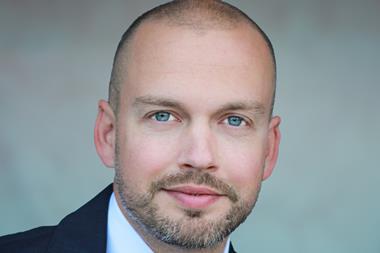With their first flush of youth now over, many of the Danish pension funds created in the 1990s should be thinking about broadening their investment horizons beyond the home market. PensionDanmark is taking a lead in looking global. Brendan Maton spoke to Torben Möger Pedersen, the fund’s CEO
A lot of major Danish pension funds are still in their youth, having been created in the early 1990s as a sensible step towards funding and a move away from reliance on the state to deliver all retirement income on a pay-as-you-go basis.
Now in their teens, these funds enjoy the familiar comforts of home: they know where everything is and who runs the place.
Evidence of a home bias can be seen by many Danish funds’ high allocation to local stocks, to local private equity ventures and even local start-ups. But this understandable bias is not shared by every teenage pension plan.
PensionDanmark is an umbrella fund for workers in construction, hotels, restaurants, agriculture, forestry and unskilled municipal labour.
Of total assets worth DKK70bn (€9.3bn), the fund has approximately one-third of 1% invested in Danish equities. This contrasts sharply with 10% for both the healthworkers’ and industrial workers’ retirement funds; 12.4% for the beta portfolio of ATP, the national supplementary fund; and even 7% for Laerernes, the teachers’ fund.
“Denmark is part of our European equities portfolio,” says Torben Möger Pedersen, PensionDanmark’s chief executive. “There is no homeland bias in equities. We are very comfortable with our early decision to take a global approach.”
If anything, PensionDanmark has looked both south and east to Japan, the Pacific rim and other emerging markets for its growth. Compared with allocations in MSCI global equities, all these markets are overweight within the fund’s equity allocation. If PensionDanmark is sanguine about companies listed in Copenhagen, it is bearish on the world’s largest continent for investors: North America accounted for just 28.8% of equity exposure at the end of last year.
Pedersen points out that much of the bias towards emerging markets and away from the US emanates from the roving nature of the fund’s global equities managers, notably Carnegie, Denmark’s most renowned international equity fund, headed by Mikael Randel; and London-based Marathon Asset Management, one of Europe’s few employee-owned firms with more than €25bn under management.
Neither firm cares much for indices as benchmarks; both have superlative track records over more than 10 years. And both have a reputation for classic value investing: Randel is on record saying that Carnegie’s flagship Worldwide fund holds favoured shares for more than a decade.
PensionDanmark mixes such active management with passive management throughout its equity portfolio. Its in-house team manages one European equity portfolio in enhanced indexing while Hermes is employed elsewhere as an active shareholder focussing on corporate governance.
This variety in type of supplier and style is found across other asset classes, even the minority portion of bond management which is not handled in-house. How does the selection team create such a rich mix, with eleven external firms running equities; four managing bonds; 17 private equity funds; four credit and hedge funds plus a further four infrastructure funds?
Pedersen says the fund takes a pragmatic approach. When it started diversifying PensionDanmark used consultants, notably Kirstein Finans, the best-known local adviser.
In the future, “if we are in a new search where external consultants have skills we do not possess in-house, we will use a consultant”. But the firm does have in-house competence on which to draw too. Led by chief investment officer, Claus Stampe, there are 10 in-house securities professionals, plus a team of three covering real estate. Some are managing portfolios themselves while others concentrate on risk management. Only four are solely focused on external manager selection, including two - Jeppe Starup and Kati Ojalouma - who specialise in private equity and other alternatives. As a rule of thumb for external observers, PensionDanmark has roughly one in-house investment professional for every €1bn under total management; a fairly typical ratio for Danish pension funds. Pedersen says that there are no active plans for a hiring spree.
Bonds have been the foundation of PensionDanmark’s investment policy. Debt of varying kinds accounts for more than half the fund’s €9.4bn assets, with domestic index-linked bonds accounting for 8% while local mortgage-backed bonds account for a large chunk of the fund’s largest asset class: European government and mortgage-backed bonds.
In a zeitgeist of uncertainty and mistrust brought on by profligate lending to home-buyers in the US and increasingly the UK, to hear of a retirement fund with one-quarter of its capital committed to mortgage-backed loans sounds ominous. This is Denmark, however, not Illinois. Danish mortgage-backed securities have provided an attractive risk premium in recent years, according to Pedersen, and PensionDanmark has taken grateful advantage.
The future, however, will bring a new strategy, with far less reliance on both mortgage-backed and government paper. Instead, PensionDanmark is going to up its exposure to infrastructure and credit; the latter has a 15% allocation in the new target allocation (see chart left), almost double the current exposure, which PensionDanmark obtains indirectly via an assortment of funds specialising in high yield, emerging market debt, leveraged loans, mezzanine and asset-backed loans.
Pedersen expresses no dissatisfaction with the current crop of managers. Where, given the current climate, many investors would be frightened of the very phrase ‘leveraged loan’, he pragmatically replies that these are senior bank debts where the client fund can see through to the underlying investment. He adds, however, that credit funds such as Eden Rock are funds of funds; so there is greater diversity to these investments than even the list featured on the opposite page suggests. Pedersen says PensionDanmark prefers to give commitments of at least €50m to the credit, hedge and private equity funds.
ATP is Denmark’s national supplementary retirement scheme and towers over all others in terms of assets and personnel. There is some resemblance, however, between PensionDanmark’s new target allocation and ATP’s beta portfolio. Four of the five major categories are the same: equities, interest, inflation or ‘real assets’ and credit. ATP hived off private equity a long time ago and also has a separate alpha portfolio. But otherwise, PensionDanmark seems to be emulating its larger peer - up to a point. Without an alpha portfolio, the industry-wide fund has more risk in long-only equity. It has no need to divide alpha and liability beta because, unlike ATP, PensionDanmark has no guarantees to maintain. In conjunction with state provision, the industry-wide fund aims to provide two-thirds of members’ income in retirement but there have never been the kind of explicit annual promises on returns that other Danish funds have to fulfil.
Pedersen counts this as one of the fundamental strengths of PensionDanmark; that it never promised contributing members a certain level of return. “Not issuing any guarantees on our products has given us a freedom in designing investment policy,” he says.
And so, while Denmark is the birthplace of liability-driven investing and the division of alpha generation from beta-matching, PensionDanmark only uses swap programmes to strike the desired balance between interest risk (duration) and other risks.
Another observable difference between ATP and this industry-wide fund is the lack of commodities. These fill the fifth and fastest-growing of ATP’s five major beta categories. At the end of 2007, the national fund had exposure to oil prices alone worth €2.3bn.
“Commodities could play a relevant role,” concedes Pedersen, “but we should have done that a few years ago. The opportunity might now have passed.”
With an annualised return since 1993 of 8.3%, no one at PensionDanmark is too bitter about the past. In truth, concerns seem far more on providing value for money to members via a very transparent bureaucracy with current administration costs per member hovering just over €50 per annum. This is arguably the lowest in Europe for a pension plan, so why worry? As contributions as a percentage of salary have risen from 0.9% to 12% over the last 15 years, PensionDanmark wants to emphasise to the social partners who steer the membership that those contributions are not disappearing into administration.
As long as the unions and employers are content, the long-term future for the plan looks rosy. Assets should reach €20bn by 2014 and because it is now only a teenager, pensions in payment will only exceed contributions in the 2040s, according to current projections. Unfortunately, as the parents of any teenager know, there will be growing pains along the way. Looking at current markets, Pedersen remains sanguine: “You have to have a long memory in investments. There can only be a correction after good years; you have to be prepared for that.”
In fact, he sees this year’s “sour” markets as a buying opportunity rather than the time to hit the escape button. With no homeland bias and a long list of current providers, PensionDanmark should be able to discover value on any continent.












No comments yet